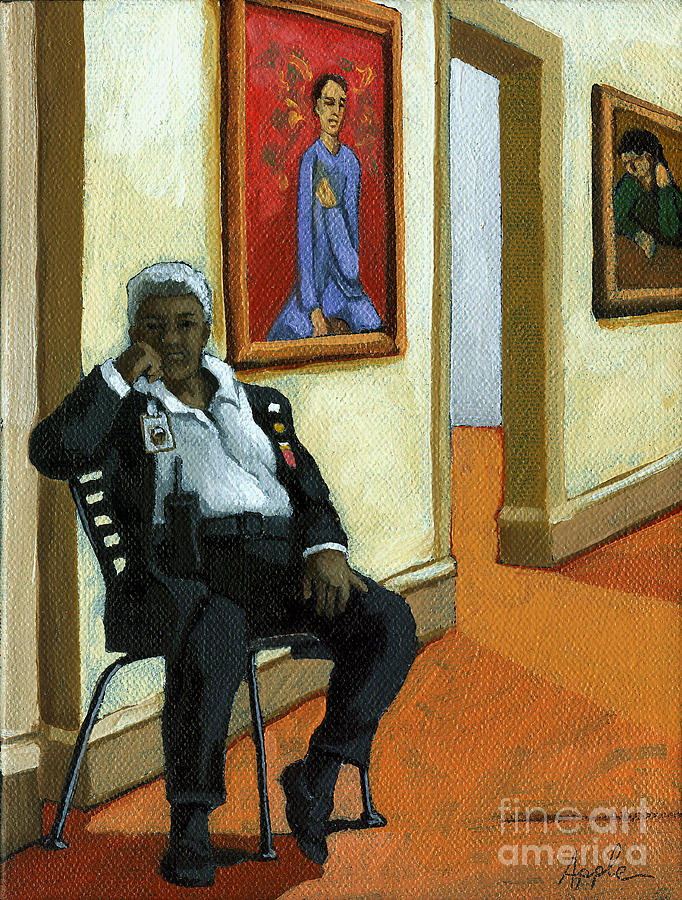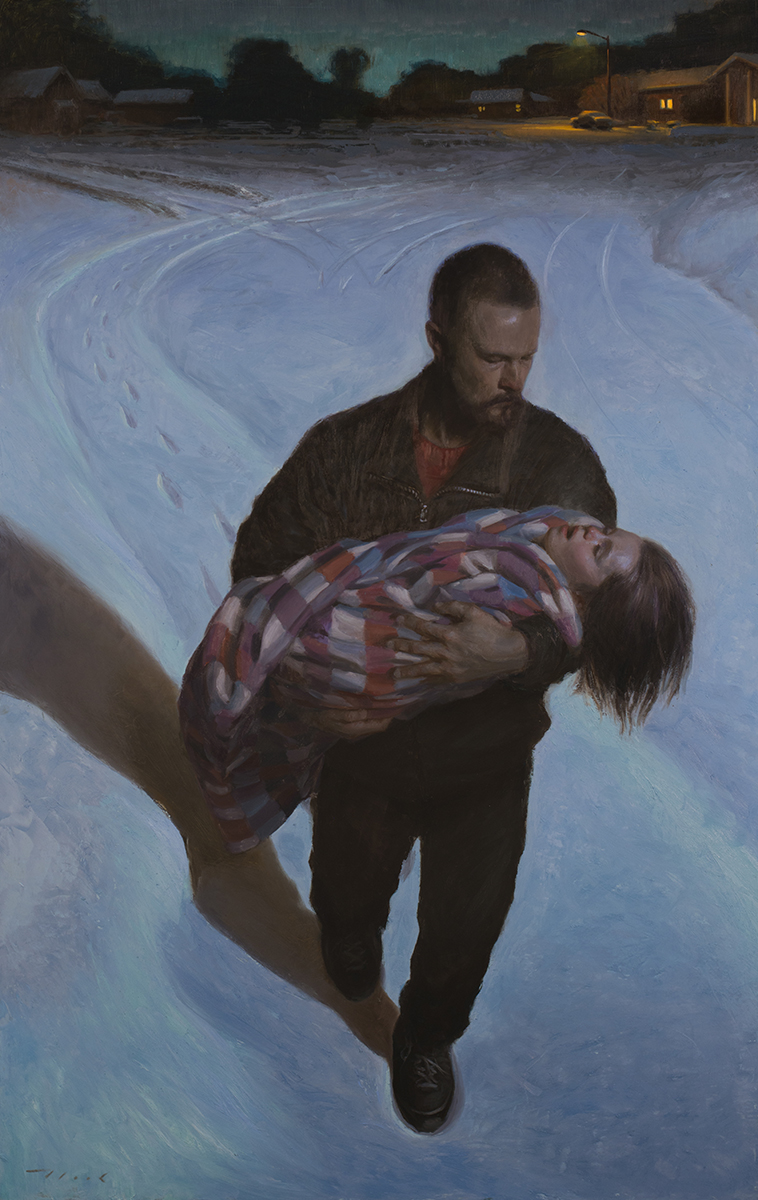The Evolution of Art: A Comprehensive Guide to Figurative Oil Painting
The Evolution of Art: A Comprehensive Guide to Figurative Oil Painting
Blog Article
The Evolution of Figurative Oil Painting: Recognizing Its Historic Value and Modern Interpretations
The advancement of metaphorical oil painting functions as an engaging lens whereby to analyze the interplay in between creative expression and historical context. From the precise naturalism of the Renaissance to the emotive power of the Baroque, each period has contributed layers of meaning and strategy to this ageless medium. Contemporary musicians, drawing from this rich heritage, are currently reinterpreting the human figure in ways that test standard narratives. As we discover these improvements, one should consider just how the discussion in between past and existing informs not only creative practice yet also social reflections in a significantly complicated globe.
Origins of Metaphorical Oil Painting
The origins of metaphorical oil paint can be mapped back to the very early Renaissance in Europe, particularly in the 15th century. The advancement of oil paint permitted for better depth of color and detail, improving the realistic look and vibrancy of their job.

In this transformative age, figures were often depicted within contextually abundant atmospheres, showcasing not only their physical characteristics but also their emotional states. Leaders such as Jan van Eyck and Titian took advantage of the tool's adaptability, utilizing layering techniques to attain luminance and structure. This development facilitated the representation of detailed textiles and the subtleties of skin tones, adding to the growth of portraiture and narrative scenes.
In Addition, the Renaissance focus on humanism fostered a gratitude for individualism, which subsequently influenced artists to develop more relatable and dynamic figures - figurative oil painting. Therefore, metaphorical oil painting arised as a powerful vehicle for narration and emotional involvement, laying the groundwork for future artistic motions and styles
Trick Historical Activities
Considerable historical activities have actually shaped the evolution of metaphorical oil paint, each contributing unique approaches and techniques that increased the medium's opportunities. The Renaissance noted a zero hour, emphasizing realistic look and the human kind, with artists like Leonardo da Vinci and Michelangelo pressing the boundaries of anatomical precision and point of view. Following this, the Baroque era brought remarkable contrasts of light and darkness, exemplified by Caravaggio, that instilled religious motifs with extreme emotionality.
The 19th century presented Romanticism and Realistic look, where artists such as Delacroix and Courbet challenged classic perfects, focusing on private expression and day-to-day life. The advent of Impressionism even more changed the tool by emphasizing the impacts of light and shade, bring about a separation from conventional representation.
In the very early 20th century, activities like Expressionism and Cubism redefined metaphorical paint through abstraction and the exploration of emotional depth. Each of these motions not just mirrored the social adjustments of their times but also prepared for contemporary interpretations. The interaction in between these historic activities has actually developed an abundant tapestry of designs and ideologies, influencing modern artists in their pursuit of capturing the human experience on canvas.
Techniques and Materials Evolution

Throughout the Baroque duration, techniques such as chiaroscuro and sfumato arised, improving the psychological vibration of figurative make-ups. Musicians began to explore lusters and impasto, adjusting texture and luminosity. By the 19th century, technologies like the use of pre-mixed paints in tubes changed ease of access, enabling artists to paint en plein air and capture the fleeting effects of light.
The 20th century observed the introduction of artificial pigments and mediums, which expanded the palette and altered the uniformity of oil paints. In addition, the expedition of brand-new application techniques, such as scheme knives and brushes of differing rigidity, additional diversified creative expression. Collectively, these improvements mirror the developing view website connection in between products, techniques, and the creative vision integral in metaphorical oil paint.

Contemporary Analyses
Contemporary analyses of metaphorical oil paint mirror a vibrant discussion in between practice and technology, where musicians test developed norms and discover varied styles. This development materializes in different methods, as contemporary artists blend timeless strategies with modern-day principles, like it usually resolving social, political, and individual stories.
Numerous specialists draw inspiration from historic jobs, yet they infuse their pieces with modern viewpoints, making use of the human type as a car for commentary on identification, sex, and culture. Artists progressively try out abstraction, distortion, and mixed media, which permits a more comprehensive interpretation of the number and its context.
In addition, making use of vibrant shade combinations and non-traditional make-ups usually serves to disrupt typical checking out experiences, prompting crucial interaction from audiences. This shift in focus prolongs past appearances; it shows a growing recognition of the complexities of human experience in an interconnected world.
As metaphorical oil painting continues to evolve, it remains an important medium for discovering the nuances of modern life, embodying both a regard for heritage and a dedication to modern idea. The result is an abundant tapestry of expression that reverberates with the complexities of the modern-day human condition.
Effect On Modern Art
The impact of metaphorical oil paint on modern-day art is profound, as it has constantly motivated a myriad of artistic movements and methods throughout the 21st and 20th centuries. From Expressionism to Surrealism and past, the expedition of the human number has remained a central style, enabling musicians to share intricate emotions and narratives. This emphasis on figurative representation has resulted in a re-examination of standard strategies, causing cutting-edge approaches that blend realism with abstraction.
Furthermore, contemporary artists have embraced figurative oil painting as a way to deal with political and social problems, using the tool to challenge understandings of identity, gender, and culture. The revival of interest in figurative job in current years mirrors a wishing for link in a progressively digital world, where human experience and feeling are extremely important.
In addition, the discussion between figurative oil painting and modern-day art is noticeable in the jobs of artists such as Kehinde Wiley and Jenny Saville, who attract on historic recommendations while infusing their pieces with modern significance. Eventually, figurative oil paint proceeds to shape and redefine modern imaginative expression, highlighting its enduring value in the art globe.
Final Thought
The evolution of more info here figurative oil paint highlights its historic relevance and versatility throughout different creative movements. From the naturalism of the Renaissance to the stirring expressions of the Baroque and the ingenious methods of modernity, this tool has continually changed. Contemporary interpretations mirror unconventional make-ups and dynamic shades, promoting crucial involvement with social and political themes. Inevitably, figurative oil painting continues to be a crucial tool for exploring the human experience, reverberating profoundly in today's electronic landscape.
The advancement of figurative oil painting serves as an engaging lens via which to examine the interplay in between imaginative expression and historic context.Significant historical motions have actually formed the development of metaphorical oil paint, each contributing unique viewpoints and methods that increased the tool's opportunities.As historic movements shaped the trajectory of figurative oil painting, the materials and methods utilized by musicians have actually likewise gone through substantial makeovers. figurative oil painting.The influence of metaphorical oil paint on modern-day art is extensive, as it has actually consistently motivated a myriad of imaginative activities and techniques throughout the 21st and 20th centuries.The advancement of metaphorical oil paint highlights its historical importance and versatility across various artistic movements
Report this page